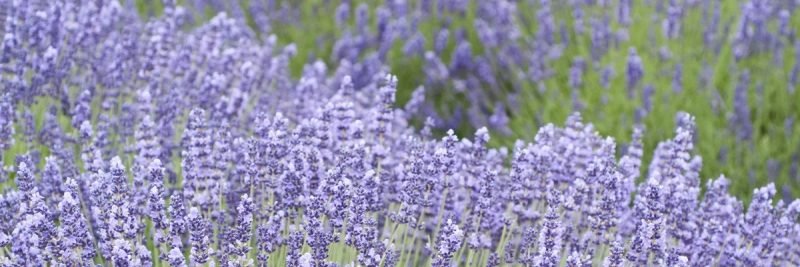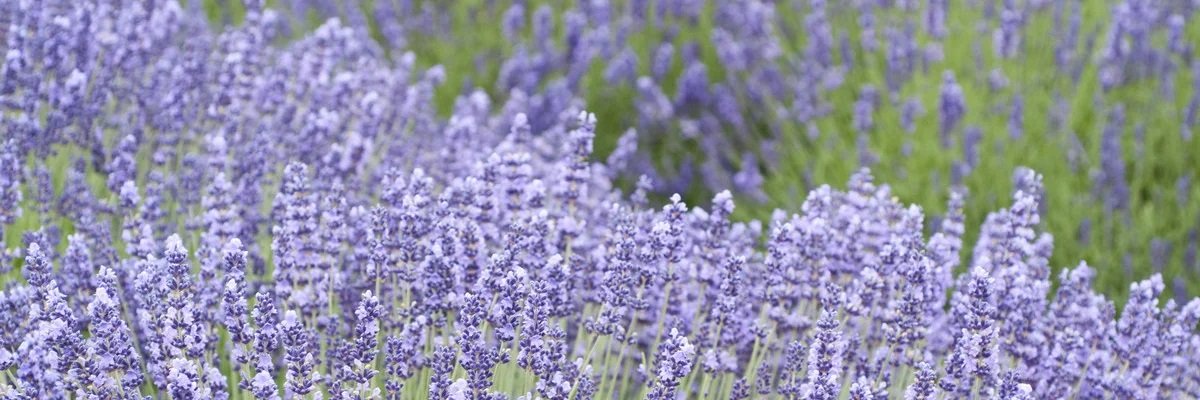Ingredients Matter
All About Lavender

Lavender, well-known in the worlds of gardening, baking, and essential oils, has now amassed substantial research, peer reviewed research, and is taking the scientific world by storm. But long before there was peer reviewed science, cultures from the distant past and around the globe new lavender was special.
A Little History
The lavender plant has been used for over 2500 hundred years. It was found in the tomb of Tutankhamen, better known as King Tut, as the Egyptians used Lavender for bathing, mummification and perfumes. Ancient Romans used lavender for washing clothes, cooking and scenting the air. It’s believed that lavender derived its name from the Latin word lavare, which means, “to wash.” The Romans also used lavender in soaps and carried it with them throughout the Empire. It was also recognized for its antiseptic and healing qualities. In Medieval and Renaissance France, women who took in washing for hire were known as “lavenders.” Clothes were washed in lavender and laid to dry on lavender bushes. Lavender was used to scent drawers, perfume the air and ward off infection and heal wounds. The Ancient Greeks used lavender to fight insomnia and back aches.
Lavender was also used as a remedy for the Great Plague in London in the 17th century. In the 16th century glove makers in France, who were licensed to perfume their wares with lavender, escaped cholera…Queen Elizabeth of England required lavender conserve at the royal table and fresh lavender flowers throughout her residence. Queen Victoria took an interest in lavender in 19th century England and English lavender became popular.
In the Americas, history has it that the Shakers were the first to grow lavender commercially. After arriving from England, they were successful in developing herb farms and produced their own products and medicines and sold them to far-away markets.
An Introduction
The clean, fresh sweet scent of lavender (Lavandula angustifolia) is such a soothing and familiar aroma that it is still incredibly popular today. Evidence based research is abundant in showing how lavender calms, helps sleep, boosts mood and memory, relieves pain, heals skin and acts as a protective agent.
Though lavender is originally a Mediterranean herb, it grows surprisingly well in North America. It prefers being in the ground but can survive in pots. Prune back new growth each year or it will grow woody, straggly, and eventually die. Lavender can be used in rows for bed dividers or as mini-hedges. Lavender does not like to be over watered so ensure there is good drainage where planted.
Practical Uses
Lavender is grown commercially for extraction of its oil from its flowers and to some degree from its foliage. The oil is obtained through a distillation process.
If you grow it in your yard, you can bring fresh cut twigs and place them in vases placed throughout your home, you can cut and dry the herb to be used for a myriad of applications, cooking, baking, mixed in teas, stuffed into sachets, tinctures or infused in oil for topical applications.
The oil and hydrosol (also from distillation) is used as a disinfectant, an antiseptic, an anti-inflammatory and for aromatherapy. An infusion of Lavender is claimed to soothe and heal insect bites, sunburn and small cuts, burns and inflammatory conditions and even acne. Lavender oils are also used for internal medical conditions, among others indigestion and heartburn.
Lavender oil is said to soothe headaches, migraines and motion sickness when applied to temples. It is frequently uses as an aid to sleep and relaxation. Personally, I use it every night for just this purpose (in the form of a Lavender scented lotion stick that I massage into my neck, arms and décolletage).
Dried lavender flowers are used extensively as fragrant herbal filler inside sachets to freshen linens, closets and drawers. As an air spray, it is used to freshen in practically any room (or on pillows).
As a member of the mint family, lavender delivers a floral, slightly sweet and elegant flavor to salads, soups, meat and seafood dishes, desserts, cheeses, baked good and confectionery. For most cooking applications it is the dried flowers that are used although the leaves may also be used. Only the buds or flowers contain the essential oil of lavender which is where the scent and flavor are best derived.
A Couple Recipes
To make lavender tea simply boil 8 oz of water. Place 4 tsp of fresh lavender buds (or 2 tsp dried buds) into a tea ball or sachet. Place the tea ball and water into a mug; allow to steep for 15 minutes. Enjoy. If you don’t have a tea ball then place directly into the boiled water cover and allow to steep. Then strain through a coffee filter prior to drinking.
To make lavender infused oil, begin with dried lavender buds. Fill a mason jar three quarters full of the buds then cover with olive oil, sweet almond oil or avocado oil (or a combination). Use a pin to prick a vitamin E capsule and squeeze a capsule or two into the jar. Place the lid on tightly, place in a window sill and allow infusing for four weeks, inverting the jar a couple times each day. After the four weeks, drain through a coffee filter or cheese cloth into another clean container with a secure lid. Now you have lavender infused oil to be used for cooking or skin applications!
Dried lavender mixed with lemon juice makes a very nice rub for fish or pork. It can also be substituted in most recipes that call for rosemary (chemical make-up is similar).
In Closing
Lavender, with its rich history and longevity throughout the ages, is one of those herbs that has a myriad of uses and can be ingested and topically applied. There continues to be growing evidenced based science on its medicinal properties, and is one herb that should find its way into your herbal medicinal cabinet. Here are Soap Essential we use lavender in a variety of soaps, lotions, scrubs and serums. It’s just too beautiful an herb not to.

